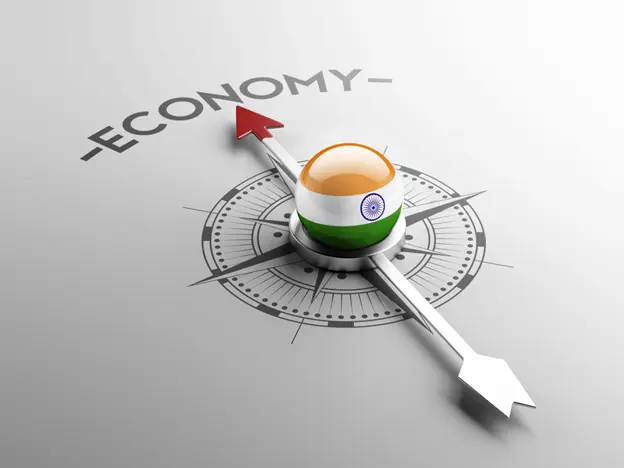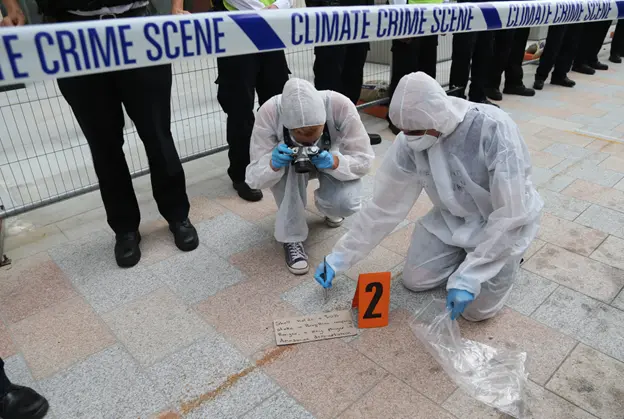A global energy crisis of unparalleled scope and complexity is currently roiling the planet. Although the crisis is most acute in Europe, it is having a significant impact on markets, regulations, and economies all over the world. Europe was the region most impacted by the crisis since the Ukraine conflict where Russia’s supplies to Europe were disrupted. The nation took action to mitigate the effects of the crisis as a result of this interruption, one of which was the urge to find new sources of energy. The African continent is rich in energy resources, but the question that remains is whether it will be able to replace Russia in meeting Europe's energy needs.
Energy Crisis and its Impact on Europe
While there are some similarities between the present energy crisis and the oil shocks of the 1970s, there are also important differences that make the current energy crisis what we refer to as a “real global energy crisis”. Contrary to the current crisis, which affects all fossil fuels because the global economy is much more integrated than it was fifty years ago, the price shocks of the 1970s mostly affected oil prices at a time when the world economy was more dependent on oil and less dependent on gas.
The global energy crisis is due to a number of factors that began during the Covid-19 pandemic’s initial phases, when there was a general decline in global energy consumption and a decrease in crude oil production as a result of the Covid shutdown and trade restrictions. Global demand for fossil fuel energy started to soar as nations started to eliminate Covid restrictions. The marketplaces that had been hampered were caught off guard when individuals went on a buying spree and a trip frenzy to make up for the time spent in quarantine. Prices have increased because the energy sector was unable to keep up with this unanticipated growth in demand.
In 2022, the conflict in Ukraine made things worse for the global energy market since Russia is a major exporter of oil and natural gas, and the war has disrupted supplies as the EU was buying around 50% of Russia’s oil exports and over 60% of its gas exports. Following the conflict in Ukraine, Russia is now subject to a number of economic, financial, and trade restrictions that the United States and the EU have imposed on them. The most significant economic sanctions imposed on the energy sector were the bans on imports of Russian crude oil and reclassified petroleum products, the prohibition of new investments in the Russian energy sector, and the bans on exports of goods to Russia, including jet fuel. The economic sanctions also cover the transport, technology, and energy sectors. A number of European countries announced their desire to fully stop importing Russian gas. Fossil fuel exports from Russia are by far the greatest in the world, and they are a crucial source for Europe. Russia supplied 25% of the EU’s total energy consumption in 2021.
Russia has significantly reduced or even shut down its export pipelines in reaction to these waves of sanctions, which has resulted in an 80% reduction in gas supply to the EU. Before the war, about half of the EU’s total natural gas imports came from Russia; by October 2022, that percentage had dropped to 12%.
EU Response to the Energy Crisis
European governments have begun to pursue a variety of policy approaches in response to the energy crisis. One category of policies, including retail price controls, regulated tariffs, support programmes for energy-intensive sectors, and liquidity or capital backing for energy corporations, including even nationalisation, try to lessen the effects of increasing prices on consumers and businesses. The other set of policies aims to encourage energy efficiency and supply growth while simultaneously capping energy costs, particularly wholesale gas prices, in an effort to stabilise and lower wholesale prices and assure energy security.
Moreover, the European Commission has urged member states to lower their energy consumption by 15% by the end of 2022 through actions like disconnecting appliances when they are not in use and turning off lights when they are not. It also urged member states to diversify their energy supplies by increasing liquefied natural gas imports from other nations, utilising more energy-efficient appliances, switching to renewable energy sources, and improving insulation in buildings to increase their energy efficiency by 30% by 2030. Additionally, a €200 billion package of measures, including direct payments to households, tax cuts, and subsidies for energy-efficient appliances, has been unveiled by the European Commission to assist vulnerable households deal with the rising cost of energy. Although these measures are a start, they will not be sufficient to entirely resolve the energy crisis. The EU will need to continue making investments in efficient and renewable energy sources, as well as in a variety of energy sources. Many European countries had to discover alternative energy sources due to the rising energy prices to satisfy demand, and was forced to obtain its energy needs from neighbouring nations, including Algeria and Nigeria.
Is Africa the Key?
A wide variety of energy resources, from hydrocarbons to renewable energy, make up Africa’s energy landscape. According to the latest report from the International Renewable Energy Agency (IRENA), increased production of oil, natural gas, and bioenergy over the previous ten years has resulted in a compound annual growth rate (CAGR) of about 2% per year for Africa’s primary energy supply. Nigeria, Algeria, Angola, and Libya are among the top twenty oil producers in the world, and Nigeria, Egypt, and Algeria are among the top twenty natural gas producers. Over 40% of the world’s gas discoveries between 2011 and 2018 came from significant new natural gas developments, which were made, among other places, in Egypt, Mozambique, Senegal, South Africa, and Tanzania. With a CAGR of 4.2% per year from 2011 to 2019, natural gas is also the fastest growing energy source in Africa.
In terms of renewable energy, Africa possesses abundant renewable energy resources, such as solar, wind, and geothermal energy, and has the potential to both meet its population’s rising energy demands and lessen its dependency on fossil fuels. Solar energy is one of the most promising sources of renewable energy in Africa, where several significant solar projects have been developed across the continent, including the Benban Solar Park in Egypt, the Jasper Solar Power Project in South Africa and the Noor Ouarzazate Solar Complex in Morocco. The two largest solar producers on the continent are South Africa and Egypt, accounting for more than 70% of Africa’s installed solar capacity in 2020. According to the latest IRENA report, solar energy is now the fastest growing renewable energy source. In Africa, solar capacity increased at an average CAGR of 54% between 2011 and 2020, which almost four times faster than geothermal, over seventeen times faster than hydropower, and is two and a half times faster than wind.
Hydropower is another promising renewable energy source in Africa; it is the continent’s largest source of renewable electricity and has a sizable untapped potential. Angola, South Africa, Egypt, Ethiopia, Ghana, Morocco, Mozambique, Nigeria, the Democratic Republic of the Congo, the Sudan and Zambia are Africa’s top hydropower producers. Wind power is another promising renewable energy resource, and South Africa, Morocco, Egypt, as well as Kenya, Ethiopia, and Tunisia, have sizable wind power capacities. Together, these countries account for more than 95% of Africa’s total wind power capacity. An example of a sizable wind project in Africa is the Lake Turkana Wind Power Project in Kenya.
The African continent also has a potential future for geothermal energy where East Africa’s rift system holds the continent’s geothermal resources. Tanzania, Rwanda, and Ethiopia are establishing new projects and investigating their geothermal resources, joining Kenya as a pioneer in the generation of geothermal energy. As a result, the use of renewable energy has increased recently, with the continent’s capacity for renewable-based generating increasing by 7% over the past ten years. The largest increases were made in the solar energy sector, where new utility-scale hydropower and solar PV plants were mostly responsible for the growth.
Despite the continent’s tremendous potential for renewable energy sources, the development of renewable energy capacities still confronts a number of challenges. Lack of infrastructure, especially in rural regions, and lack of access to energy are two main challenges that many African countries are currently facing. According to the latest IRENA report, a projected 592 million Africans lacked access to clean cooking fuels and technologies in 2019, while 927 million did not have access to power. In rural areas of Sub-Saharan Africa, the access gap is extremely severe, with average rates of 25% for electricity and only 4% for clean cooking. This implies that before beginning to export to other countries, Africa must first meet its own energy needs.
Moreover, financing represents a significant challenge for Africa where many projects require upfront investments. According to the 2022 International Energy Agency (IEA), between 2026 and 2030, Africa will need to invest $190 billion per year, with two-thirds of that amount going toward renewable energy, to meet its energy and climate goals. This significant amount necessitates the attraction of private investments from governments and international organisations, as well as the establishment of creative financing mechanisms. Consequently, the EU, who is approaching another winter at the end of this year, needs to direct its investments towards Africa given that it holds promising renewable energy capabilities and that it has natural gas as it fastest growing energy source. Such investments will accelerate the development of renewable energy resources capacity who remains modest and will allow the EU to satisfy it energy needs by exporting it from Africa.
To sum up, Africa has significant renewable energy capacities, but to maximize the use of these capacities, challenges like poor infrastructure, access deficit and financing need to be addressed with the right policies, investments, and partnerships. Once these challenges are overcome, Africa will be able to fully realise its renewable energy potential and build a sustainable energy future for its people and start exporting to other countries including the EU and be its’ energy alternative supply but not in near future rather on a longer term.
References
Beating the European Energy Crisis [Internet]. [cited 2023 Jul 11]. Available from: https://www.imf.org/en/Publications/fandd/issues/2022/12/beating-the-european-energy-crisis-Zettelmeyer
The global energy crisis – World Energy Outlook 2022 – Analysis – IEA [Internet]. [cited 2023 Jul 12]. Available from: https://www.iea.org/reports/world-energy-outlook-2022/the-global-energy-crisis
Where things stand in the global energy crisis one year on – Analysis – IEA [Internet]. [cited 2023 Jul 12]. Available from: https://www.iea.org/commentaries/where-things-stand-in-the-global-energy-crisis-one-year-on
Europe’s ‘energy war’ in data: How have EU imports changed since Russia’s invasion of Ukraine? | Euronews [Internet]. [cited 2023 Jul 12]. Available from: https://www.euronews.com/green/2023/02/24/europes-energy-war-in-data-how-have-eu-imports-changed-since-russias-invasion-of-ukraine
Renewable Energy Market Analysis [Internet]. [cited 2023 Jul 12]. Available from: https://www.irena.org/publications/2022/Jan/Renewable-Energy-Market-Analysis-Africa
Key findings – Africa Energy Outlook 2022 – Analysis – IEA [Internet]. [cited 2023 Jul 12]. Available from: https://www.iea.org/reports/africa-energy-outlook-2022/key-findings
Accelerating Access to Renewable Energy in West Africa [Internet]. [cited 2023 Jul 12]. Available from: https://www.worldbank.org/en/news/press-release/2023/01/31/accelerating-access-to-renewable-energy-in-west-africa














Comments